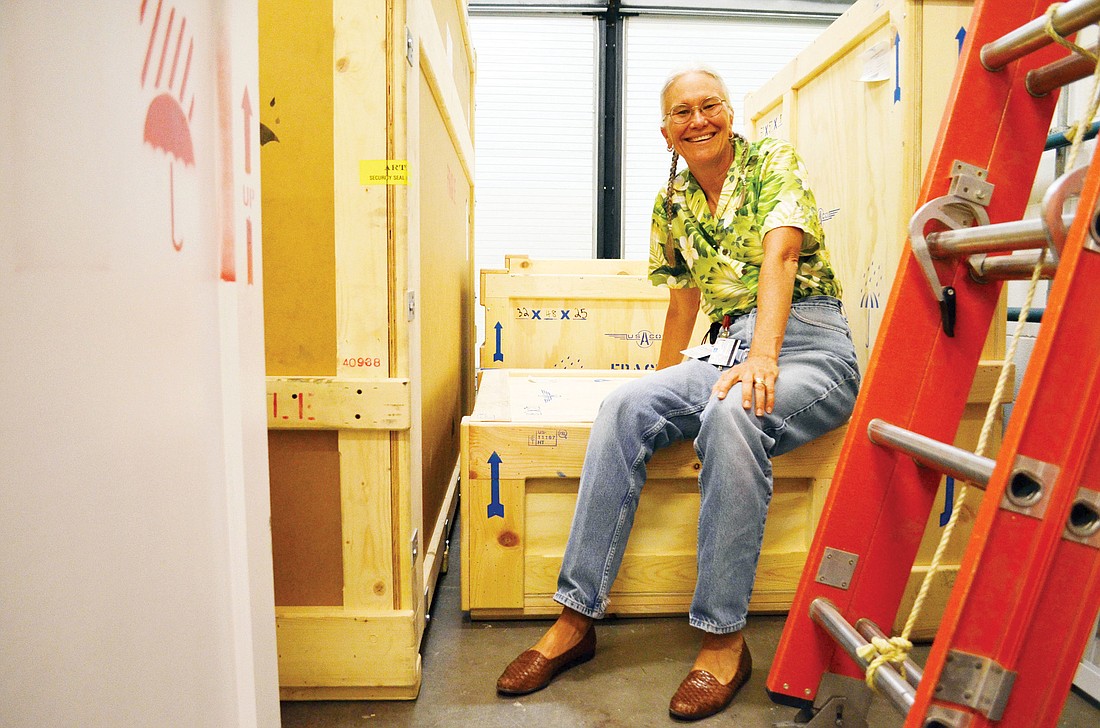- April 19, 2024
-
-
Loading

Loading

Heidi Taylor has seen the finest loading docks of museums in the country.
“I might not get to see the museums, but I get to see their loading docks,” she says. “The Getty has the best one. Houston’s is nice, too.”
As associate registrar of The Ringling Museum, Taylor helps preserve and protect the museum’s collection. This means traveling with the pieces on loan to and from their destinations.
Although pieces of the museum’s collection have traveled as far as Spain and Paris, Taylor isn’t too keen on flying. She has taken pieces to Seattle, Newport, R.I., Detroit and everywhere in between. She did travel internationally to take a portrait from the permanent collection of Cardinal Giovanni Salviati by Sebastiano Del Piombo to the National Gallery of Canada. It was a proud moment.
“I made them stamp my passport,” she says. “They said they don’t usually stamp U.S. passports.”
Taylor’s job also means she keeps visitors from climbing on The Ringling’s statues, which is ironic, because she used to climb on the statues as a little girl.
Taylor’s father, Mel Miller, was the first circus museum curator. There are photos of her as a 5-year-old sitting atop several of the 52 carousel animals. Her father promised her the first ride on the finished carousel, once the museum installed it. But the museum sold the carousel pieces in 1986 to pay for the renovation of the circus museum. Her father died of cancer in 1981.
In 1990 she joined the museum staff as a gate attendant selling tickets. She liked watching new visitors walk out amazed — she still gets a kick out of that.
Since then, she’s climbed the ranks (not the statues) to the collections office, where she uncovers all “the secret little funny hidden treasures” of the museum, as she says.
Part of her job consists of tracking the collection and logging it in the database. She catalogues new acquisitions to the collection, such circus artifacts from retired performers. She also assists with a yearly inventory, which always uncovers a few interesting pieces.
One inventory uncovered two Japanese phoenix panels behind the circus wagons in the Circus Museum. She imagines the wood carvers were probably interested in them, tucked them in a corner with the intention of working on them but forgot they were there.
The museum’s conservator recently cleaned them up, and the two panels, believed to originally be from John Ringling’s estate, will be highlighted in the Asian Arts pavilion currently under construction.
Taylor gets to see a lot of the exhibitions before they’re on display. She’s been cataloging a donation of photographs by Builder Levy, who photographed the Civil Rights Movement in New York. An exhibition, called “Builder Levy: Appalachia USA,” is slated for the coming year.
She also helped install the furniture in the Cà d’Zan after the restoration (completed in 2002) and remembers they couldn’t get the carpet up the stairs and had to use a forklift to hoist it in through the balcony.
And in 2008 she was there when the Wisconsin railroad car was installed in the circus museum at 2 a.m. in the rain. It was John and Mable Ringling’s luxury Pullman in which they traveled across the country.
“It looked like a massive 80-foot-long white pill because it was all shrink-wrapped,” she says with a laugh.
She got to witness the restoration of the 1905 rail car to its former glory. It once had roofing tar covering the stained-glass windows and white paint covering the beautiful woodwork.
“You fall in love with the place,” she says. “It gets in your blood and you can’t help it.”